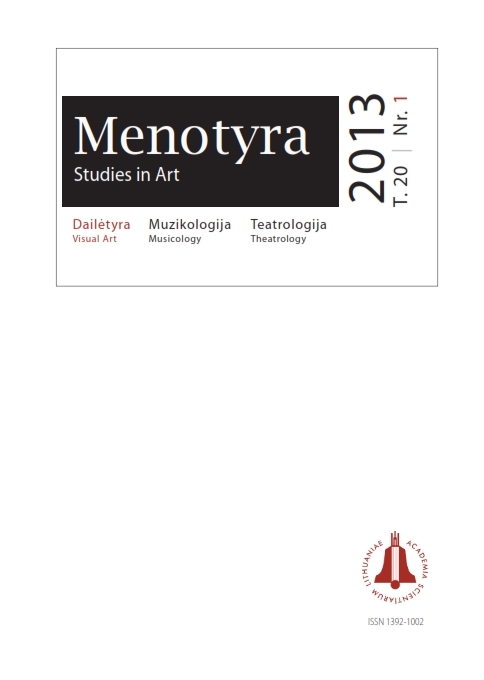Nueinančios epochos ženklas: polichrominis Lietuvos bažnyčių interjero dekoras
The sign of the epoch: polychromatic décor in the church interiors of Lithuania
Author(s): Skirmantė Smilingytė-ŽeimienėSubject(s): Fine Arts / Performing Arts, Architecture, Visual Arts
Published by: Lietuvos mokslų akademijos leidykla
Keywords: polychromy; church decoration; ornamentation; historicism; Gothic Revival; Vladas Čižauskas
Summary/Abstract: The aim of the present paper is to draw attention to the problems of polychromatic décor of church interiors of the 20th century, which has survived quite well in Lithuania but is rapidly disintegrating. It is a marginal field of church art that has received very little research attention. The list of protected cultural objects only includes the mural paintings of several churches from the last century and the most significant examples that have been analysed by art scholars (e. g., Panevėžys Cathedral, Merkinė, Joniškis, Perloja, or Lentvaris churches). The dynamics of décor of church interiors in the 20th century and its models have not been widely assessed, and it is not clear which polychromy of that period is authentic and what has been lost (e. g., Lukšiai, Jurbarkas, Gudeliai, Antalieptė, Uliūnai, Leliūnai, and other churches). Even though being a provincial phenomenon, polychromatic décor is not yet realized as part of the history and artistic heritage of a concrete church. Its significance for the church appearance has not been defined, the meaning of its symbols and ornaments has not been deciphered, and it has not been regarded as a reflection of the epoch. Also, it has not been established which layer of polychromy (in case of several layers) best matches the architecture and furnishing of the building. Due to all these factors, polychromy tends to be easily destroyed during renovation works. Moreover, a certain tendency of whitewashing and minimization of church interiors has taken root recently – walls and vaults are painted monochromatically, in light colours, eliminating any patterns or traces of figurative compositions. On the other hand, the fashion to “decorate” the church with lacquered wooden planks or parquetry and thus postpone the necessity for renovation is still widespread. There are dozens of Catholic churches in Lithuania refurbished in this style (e. g., Adomynė, Akmenynai, Bezdonys, Ceikiniai, Daugailiai, Daunoriai, Kretkampis, Kapčiamiestis and Medininkai, Mikoliškiai, Muniškiai, Pavilnys, Rimšė, Spirakiai, Stalgėnai, Svė- dasai, Tirkšliai, Uliūnai, and others), in which the visually active wall planking not only conceals the former colour décor, but also quite often clashes with the furnishing.The author of the current publication aims to generalize the development of polychromy in Lithuanian churches in the 20th century and to show how the rudiments of national identity - certain ornamental symbols and reflections of more modern stylistics – appeared in the style of historicismhich continued from the 19th century and survived in Lithuania for a long time. The aesthetical (e. g., gothicization) and methodical approaches that inspired the polychromy of church walls at the turn of the 19th and 20th centuries are revealed. The author seeks to establish the nature of polychromatic décor, its main elements, and the most popular samples of clichés used by interior decorators.
Journal: Menotyra
- Issue Year: 20/2013
- Issue No: 1
- Page Range: 37-49
- Page Count: 13
- Language: Lithuanian

